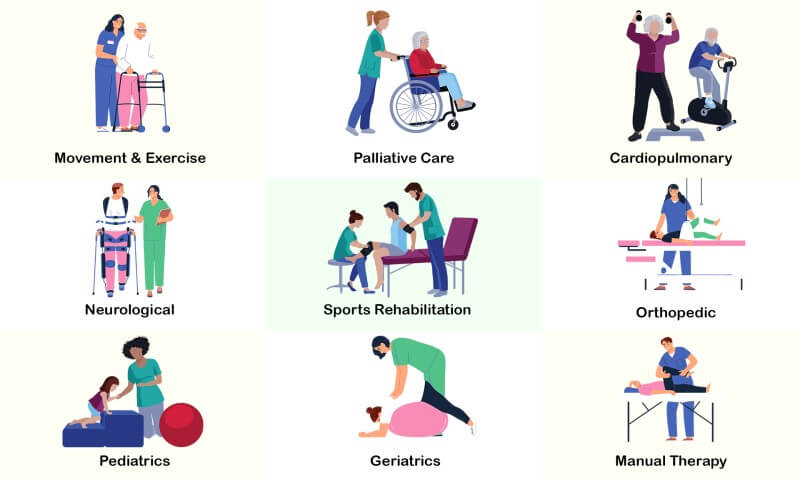Expert Physiotherapy Techniques for Improved Toughness and Well-Being
The domain of specialist physical rehabilitation encompasses a range of strategies designed to enhance both stamina and total health. Central to this practice is the understanding of personalized treatment strategies that incorporate resistance training, hand-operated therapy, and practical exercises, each offering distinctive roles in recovery. Integrating mindfulness into these methods not only assists in psychological durability however likewise boosts individual involvement in their recuperation trip. As we discover the effects of these techniques, the concern develops: exactly how can these skilled methods be efficiently tailored to meet the unique needs of diverse client populations?
Comprehending Physiotherapy Principles
Physical rehabilitation principles are based in an all natural understanding of the body and its feedback to injury and recovery. These principles highlight the interconnectedness of physical, emotional, and social factors that affect a person's health. A basic element of physiotherapy includes evaluating the patient's general condition, recognizing impairments, and creating tailored therapy plans that promote recovery and boost function.
At the core of physical rehabilitation is the belief in patient-centered treatment, where specialists proactively involve people in their rehab procedure. This collective strategy fosters inspiration and encourages adherence to treatment methods. Moreover, physiotherapists use evidence-based techniques to direct their treatments, guaranteeing that strategies and modalities are supported by existing research.
Another key principle is the value of activity and feature in rehabilitation. Physiotherapists concentrate on recovering mobility, strength, and sychronisation, acknowledging that optimum physical feature is important for general health. In addition, education and learning plays a vital role in physiotherapy, as professionals overview people in recognizing their conditions and adopting healthier way of life options.
Secret Methods for Stamina Structure
Toughness structure is an important component of recovery, intended at improving muscle function and overall physical efficiency. Physio therapists utilize various strategies to facilitate this process, customizing programs to fulfill private client needs.
One key technique is resistance training, which involves exercises making use of weights, resistance bands, or body weight to boost muscle mass strength. This approach properly targets particular muscle groups, advertising hypertrophy and endurance. Another essential approach is functional training, which focuses on workouts that simulate day-to-day activities, boosting the capability to execute routine jobs with greater convenience and strength.
Dynamic overload is also essential in stamina structure. This principle involves gradually boosting the strength of exercises, whether with included weight, enhanced reps, or altered pace, ensuring regular adaptation and growth of muscular tissue fibers. Additionally, integrating plyometric workouts can enhance power and volatility, which is specifically useful for athletes and active people.
Lastly, isometric exercises, where muscular tissues agreement without changing length, can boost security and strength in particular joints. address By incorporating these techniques into customized rehabilitation programs, physiotherapists can properly support clients in accomplishing their strength-building objectives, ultimately causing boosted functional end results and boosted lifestyle.
Advantages of Handbook Treatment
Including a selection of healing strategies boosts the total effectiveness of rehabilitation programs, and manual therapy stands out as a valuable technique. This hands-on intervention is instrumental in minimizing pain, improving mobility, and helping with the healing procedure.
Hand-operated treatment includes different techniques, including soft cells mobilization, joint adjustment, and myofascial launch (physio north lakes). These techniques aim to lower muscular tissue stress, improve circulation, and restore useful activity. By attending to soft tissue restrictions and joint disorders, hands-on therapy can significantly add to discomfort relief and improved series of movement
Additionally, the therapeutic touch associated with hands-on therapy cultivates a strong patient-provider relationship, advertising depend on and comfort. This psychological link can enhance person adherence to recovery protocols and total complete satisfaction with their care.
Study has actually shown that guidebook therapy can be especially reliable for conditions such as reduced back discomfort, neck pain, and stress headaches. physio north lakes. As a corresponding treatment, it can be incorporated with other methods, such as exercise or techniques, to optimize results. Inevitably, the benefits of hand-operated therapy emphasize its important duty in extensive physical rehabilitation treatment plans, sustaining both strength improvement and total wellness
The Duty of Exercise Prescription
Workout prescription plays a pivotal function in the recovery process, working as find here a fundamental element for accomplishing optimum client end results. It involves the methodical preparation of exercises tailored to the private demands and capabilities of individuals. By taking into consideration elements such as age, physical problem, and details wellness goals, physiotherapists develop tailored exercise programs click this link that foster healing and improve total physical health.

Furthermore, workout prescription cultivates person engagement and ownership of the rehab procedure. By proactively getting involved in their recuperation, patients are a lot more most likely to follow suggested routines, leading to improved results. In summary, workout prescription is an essential component of physiotherapy, offering structured, personalized plans that sustain people in their trip towards boosted toughness and total wellness.
Integrating Mindfulness in Recuperation
The unification of mindfulness techniques right into rehabilitation methods provides an alternative approach to recuperation that complements traditional workout prescription. Mindfulness, specified as the deliberate emphasis on today moment, can significantly improve client outcomes by fostering better understanding of bodily sensations and emotions. This enhanced understanding allows people to much better acknowledge pain signals and stress and anxiety feedbacks, assisting in much more effective self-regulation.
Study has shown that incorporating mindfulness methods, such as meditation and concentrated breathing, can lower stress and anxiety and improve psychological durability throughout healing. These techniques encourage individuals to manage pain and cultivate a positive mindset, which is essential for sticking to exercise routines and accomplishing lasting rehab goals.
Physio therapists can incorporate mindfulness by leading individuals through quick mindfulness exercises before or after physical treatment sessions. This integration not just aids in physical recuperation however also advertises general mental health. Training patients to engage in mindfulness throughout workouts can enhance their focus, making sure that movements are carried out with higher accuracy and intention.
Final Thought
